Front seat adjustment
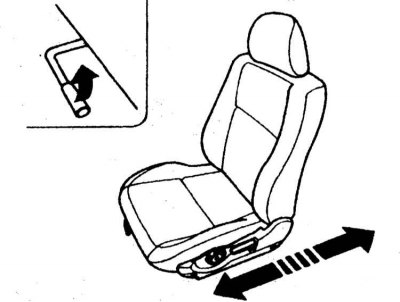
Before you start driving, adjust the position of the seat. To adjust the fore/aft position of the seat, lift the release lever located at the front under the seat cushion. While holding the lever, move the seat forward or backward to a comfortable position for you. Then release the release lever. To check if the seat is secure, try moving it back and forth.
To change the angle of the seatback, lift the release lever located on the side of the seat cushion base (from the side of the door). While holding the lever, bring the backrest to a comfortable position, then release the release lever.
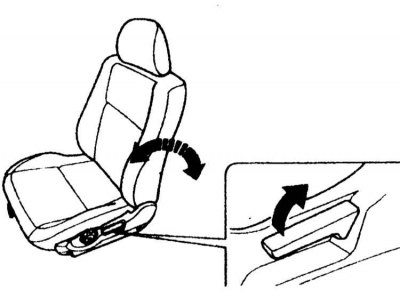
This will lock the back into its new position.
Cars with a 3-door hatchback body
The front seat backrests can be tilted forward to make it easier for passengers to get into and out of the rear seat. Latch release handles are located on the side of the seat backs (from doorways).
Cars with a 5-door hatchback body
Adjustment of an inclination of a back of a forward seat is carried out by means of the rotary handle (rear), located on the side of the seat cushion base.
Warning! A large inclination of the seat back impairs the protective properties of the seat belt. In the event of an accident, you could dive under the belt and be seriously injured. While driving, bring the backrest to an upright position. Sit with your back fully supported by the back of the seat.
Driver's seat cushion height adjustment (individual models)
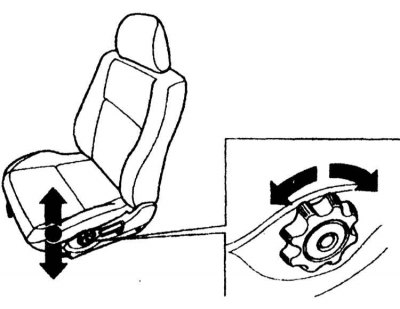
The driver's seat cushion can be adjusted in height. Adjustment is made by turning the knob, which is located on the left side of the seat cushion base.
Electric driver's seat adjustment (individual models)
Your vehicle may be equipped with an electrically adjustable driver's seat. The two electrical adjustment switches are located on the left side of the seat cushion base. The combination switch with a long horizontal handle is designed to adjust the longitudinal and vertical position of the seat, and the switch with a short vertical handle is used to adjust the backrest.
The seat can be adjusted in any position of the key in the ignition. Before you start driving, adjust the position of the seat.
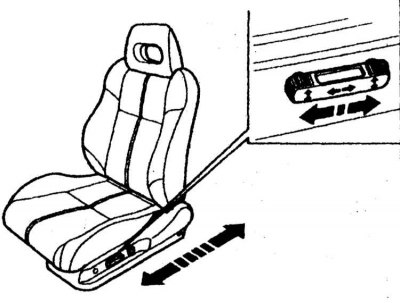
Push the combination switch handle forward or backward to move the seat closer or further away from the steering wheel and control pedals.
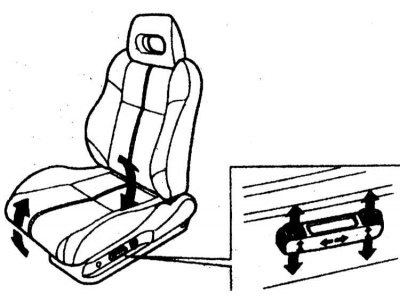
Push up or down on the front end of the combination switch handle to raise or lower the front edge of the seat cushion. Similarly, press up or down on the rear end of the combination switch handle to raise or lower the rear of the seat cushion.
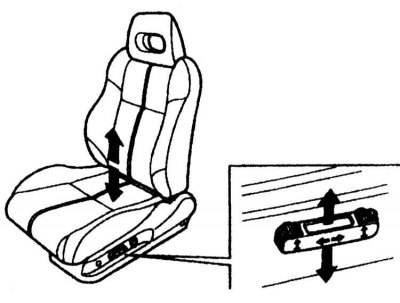
To raise or lower the entire seat cushion, press up or down on the center of the switch handle.
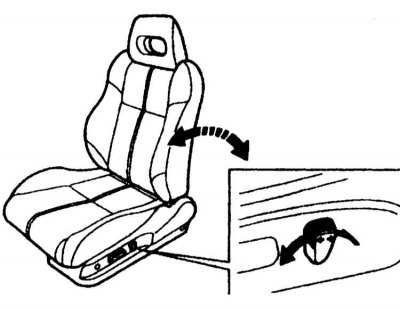
Adjust the seatback angle by tilting the vertical switch handle located behind the combination switch to the appropriate side.
Warning! A large inclination of the seat back impairs the protective properties of the seat belt. In the event of an accident, you could dive under the belt and be seriously injured. While driving, bring the backrest to an upright position. Sit with your back fully supported by the back of the seat.
Headrests
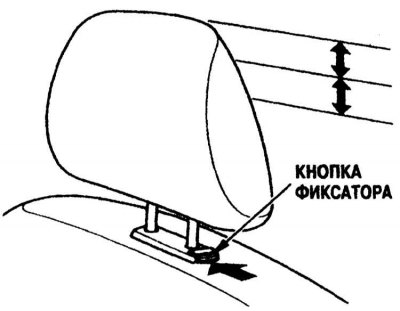
The front seats of your vehicle are fitted with head restraints. On some modifications of the car, head restraints are also installed in the rear seat. Head restraints help prevent neck and head injuries. In order for the head restraints to perform their protective functions, they must be properly adjusted. The top of the headrest cushion should be flush with the top edge of the ear.
On some modifications of the car, it is possible to adjust the headrests in height. The head restraint is adjusted with both hands at the same time, so do not attempt to adjust the head restraint while the vehicle is moving. To raise the head restraint, simply pull it up. In contrast, to lower the head restraint, you must first press the release button.
To remove the head restraint for cleaning or replacement, proceed as follows. Raise the head restraint all the way. Then press the release button and remove the head restraint from the seat back.
Warning! Operating the vehicle without head restraints can result in serious injury to the driver and passengers in the event of an accident.
Check that the head restraints are in place and adjust them accordingly.
Folding the rear seatback (individual models)
The back of the rear seat is made separate, and consists of two parts that can be folded forward, opening up direct access to the trunk. The rear seat backrest locks that lock it in the normal position can be released both from the passenger compartment and from the trunk.
Each of the two sections of the backrest can be folded forward independently of the other.
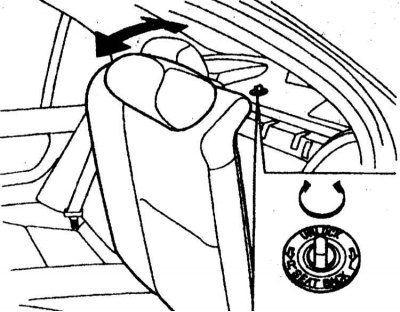
Turn the lock knob clockwise to fold the left section or counterclockwise to fold the right back section.
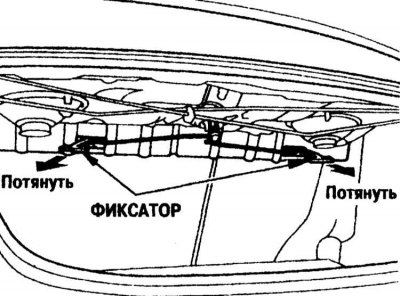
To fold the rear seatback out of the trunk, pull on the tabs located under the rear shelf.
After returning the rear seat back sections to their normal position, push them hard towards the rear shelf to lock them in place. Check that the rear backrest locks are engaged securely by pulling the upper edge of the backrest towards you. After returning the rear seatback to the upright position, check that the straps of both diagonal lap belts are positioned over the backrest.
Make sure that all things that are in the trunk or protrude from the trunk into the interior of the car are securely tied. Unsecured luggage can break loose and injure the driver and passengers in the event of an emergency braking of the vehicle.
Cars with a 3-door hatchback body
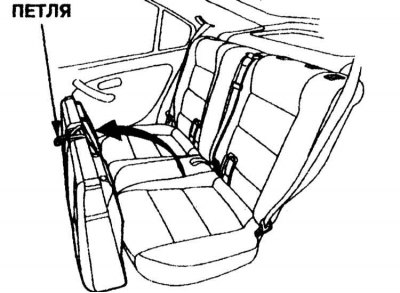
To fold down the rear seatback sections (simultaneously or separately), lift the release button located on the top of each section.
Cars with a 5-door hatchback body
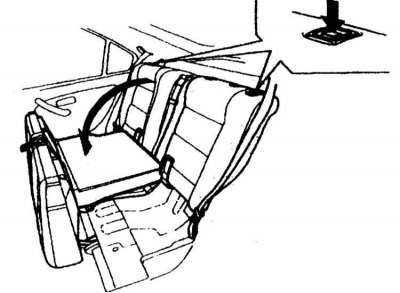
Before folding the backrest sections, rotate the rear seat cushion to the vertical position so that it is positioned behind the front seats. To do this, use the loop attached to the rear edge of the seat cushion. Remove the headrests from the backrest and insert them with pins into the holes made in the base of the seat cushion. Then fold down the rear seat back sections.
Do not drive with the trunk lid open and the rear seat back folded down as there is a possibility of carbon monoxide poisoning (SO).
